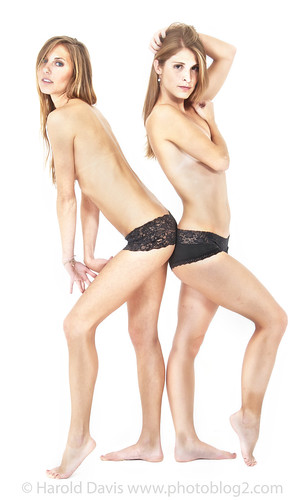
Glyph, photo by Harold Davis. View this image larger.
A good friend living across the country who we don’t see very often wrote me: “I am so not used to you doing risque photos of women that I find it a bit disconcerting.” The questions behind the comment, of course: Is everything all right with you and Phyllis? Are you having some kind of mid-life crisis?
Nothing of the sort—but if our friend wondered, I realize, so might others. After all, images of nearly naked women are a pretty far cry from my more usual fare of landscapes, night photography, flowers, and Photoshop “impossible” imagery.
I wrote the friend (in part): “No worries, it is all professional. I’m under contract to do a couple of projects that involve photographing people, and I’ve found models one of the easiest ways to get practice.”
Of course, I don’t deny that photographing naked women is fun. Phyllis is fine with my efforts in this direction, and observes that in fact this shows the strength of our marriage.
I’ve found that all the different kinds of photography have their own distinct challenges. Until you’ve tried flower photomacrography, for example, you won’t appreciate the challenges. So figure photography has some unique isssues.
Among these is the taxonomy of the exchange between photographer and model. All good models enjoy being exhibitionists; and all good photographers are voyeurs. Whether or not money changes hands, all good professional models and photographers are excited by creative image making.
I often find myself approaching the composition of a female nude with some of the same clinical detachment that I might use in composing a landscape. However, part of the point of a nude—or nearly nude—is to convey the lineaments of desire, even if these lineaments are presented in the coolly classical manner of Edward Weston’s figure studies. Who noted, by the way, that it didn’t matter if it was a shell, an artichoke, or a woman.
I think Weston may not have known his own feelings that well, which is why he tended to sleep with his models (after all, you don’t usually go to bed with an artichoke). I try to take my feelings of attraction, sensuality, and desire—and bring them as a positive force into my life, my work, my relationship, and my relationship with my work.
Speaking of Weston, whom I admire enormously, I’ve noted previously that his famous Daybooks are essentially a blog in hard copy format. Turning this on its head, it is fair to say that my blog is my virtual “Daybook.” It goes back to 2005, includes thousands of almost daily entries, and documents life’s tribulations, photographic techniques, and much more. Many people who I don’t know read my blog. When I do meet them it is clear they know a great deal about me and my family. Therefore, it’s only fair that I explain the nearly naked women. They are about photography.
Pingback: No Take-Backs | Photoblog 2.0
Pingback: Model Bride | Photoblog 2.0
Pingback: Live By Technology Die By Technology | Photoblog 2.0